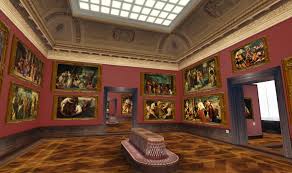1. Total expenditure by tourists € 278.3 bn
by domestic tourists € 241.7 bn (87%)
by international tourists € 36.6 bn (13%)
Total national gross value added (direct, indirect, and induced effect) € 214.1 bn.
Proportion of total national gross value added 9.7%
of which: total national gross value added(direct effeckt) € 97.0 bn
Proportion of total national gross value added 4.4%
Overall impact on employment(direct, indirect, and incluced) 4.9 million workers
Proportion of total number of workers in Germany 12.0%
of which: impact on employment(direct) 2.9 million workers
Proportion of total number of workers in Germany 7.0%
International arrivals 2011
International arrivals in million (incoming) 28.4
Arrivals per 100 of the population 35
More information can be found at
http://www.germany.travel/media/pdf/dzt_marktforschung/DZT_Incoming_GTM12_en_web.pdf
on page 08
2. Some Major tourist attractions are:
A. Neuschwanstein

The ultimate fairytale castle, Neuschwanstein is situated on a rugged hill near Füssen in southwest Bavaria. It was the inspiration for the Sleeping Beauty castles in the Disneyland parks. The castle was commissioned by King Ludwig II of Bavaria who was declared insane when the castle was almost completed in 1886 and found dead a few days later. Neuschwanstein is the most photographed building in the country and one of the most popular tourist attractions in Germany.
B. Heidelberg Old City

Located in the Neckar river valley, Heidelberg is one Germany’s most popular tourist destinations. During WWII, the city was almost completely spared by allied bombings which destroyed most of Germany’s larger inner cities. As a result, Heidelberg has retained its baroque charm of narrow streets, picturesque houses and the famous Heidelberg Castle.
C. Oktoberfest
 The Oktoberfest in Munich is the largest Volksfest in the world with over 6 million visitors annually. Despite the name, the Oktoberfest starts at the end of September until the first weekend in October. An important part of Bavarian culture, the festival has been held since 1810. Visitors enjoy a wide variety of traditional fare such as Hendl, Schweinebraten, Würstl, Knödel and large quantities of German beer.
The Oktoberfest in Munich is the largest Volksfest in the world with over 6 million visitors annually. Despite the name, the Oktoberfest starts at the end of September until the first weekend in October. An important part of Bavarian culture, the festival has been held since 1810. Visitors enjoy a wide variety of traditional fare such as Hendl, Schweinebraten, Würstl, Knödel and large quantities of German beer.
http://www.touropia.com/tourist-attractions-in-germany/
3. Some national parks include:
A.
Schleswig-Holstein Wadden Sea National Park
 B. Rügen Cliffs
B. Rügen Cliffs

C.
Hainich National Park

4. Important Museums
A.
Gemäldegalerie

B. Pinakothek Art Galleries

C. Federal Art Space

